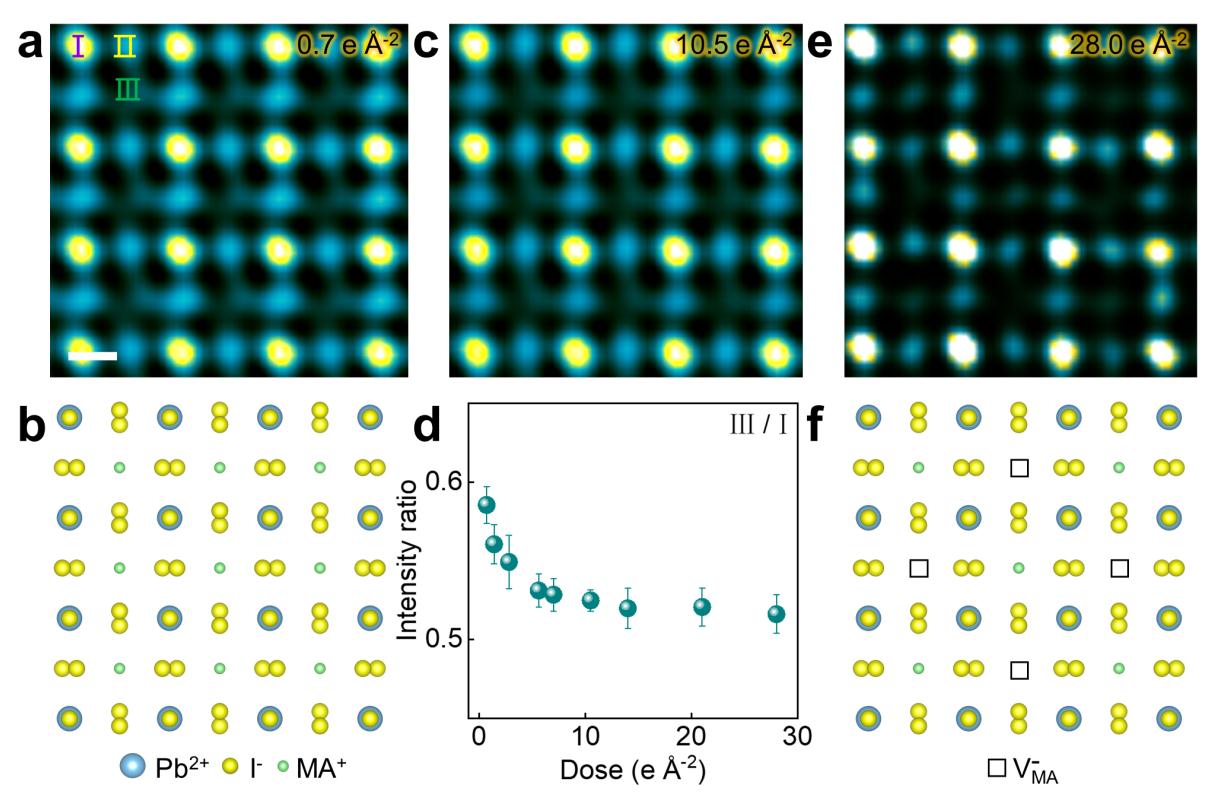
Organic-inorganic hybrid perovskites (OIHPs) are promising in photovoltaic energy harvesting, electro-optic detection, and all-optical conversion. Understanding the atomic structure and structural instability of OIHPs is the key to appreciate their remarkable photoelectric properties.
However, atomic imaging of OIHPs by electron microscopy is challenging due to the extreme beam-sensitivity. In fact, so far, the damage-free pristine structure of CH3NH3PbI3 (MAPbI3) has never been captured at the atomic scale.
Through low-dose imaging by direct-detection electron-counting camera, Dr. WANG Xiao's group from the Shenzhen Institute of Advanced Technology (SIAT) of the Chinese Academy of Sciences, Dr. ZHAO Jinjin's team from Shijiazhuang Tiedao University, Dr. LI Jiangyu's team from Southern University of Science and Technology, and Dr. GAO Peng's team from Peking University imaged the atomic structure of perovskite MAPbI3 and discovered its degradation pathway.
Their study was published in Nature Communications.
The researchers studied the atomic structure via an imaging technique using a negative value of the spherical-aberration coefficient. As the dose increased, the intensity of MA+ decreased with the formation of VMA-. At a certain dose, the intensity kept constant, indicating a relatively stable intermediate phase, MA0.5PbI3, which was verified by further TEM analysis and molecular dynamic simulation.
They found that the band gap increased as the density of MA vacancy increased, which provided a potentially new strategy to tune the bandgap in constructing tandem solar cell and facilitated multiwave electroluminescence emission, adjusting various color luminescence under increasing bias voltage.
The team further investigated the atomic-scale decomposition pathway of MAPbI3. At the first stage, the VMA- formed and the intermediate phase MA0.5PbI3 emerged. Consequent diffusion of Pb2+ and I- into V-MA and the [PbI6]4- octahedron slipping from corner sharing to edge sharing made the structure gradually evolve to PbI2.
These findings enhance our understanding of the photoelectric properties of MAPbI3 and provide potential strategies into material optimization.

Fig. 1 Atomic-imaging of the loss of MA+ and intermediate phase. (Image by SIAT)

Fig. 2 Atomic-scale imaging of the decomposition pathway. (Image by SIAT)

86-10-68597521 (day)
86-10-68597289 (night)

52 Sanlihe Rd., Xicheng District,
Beijing, China (100864)

